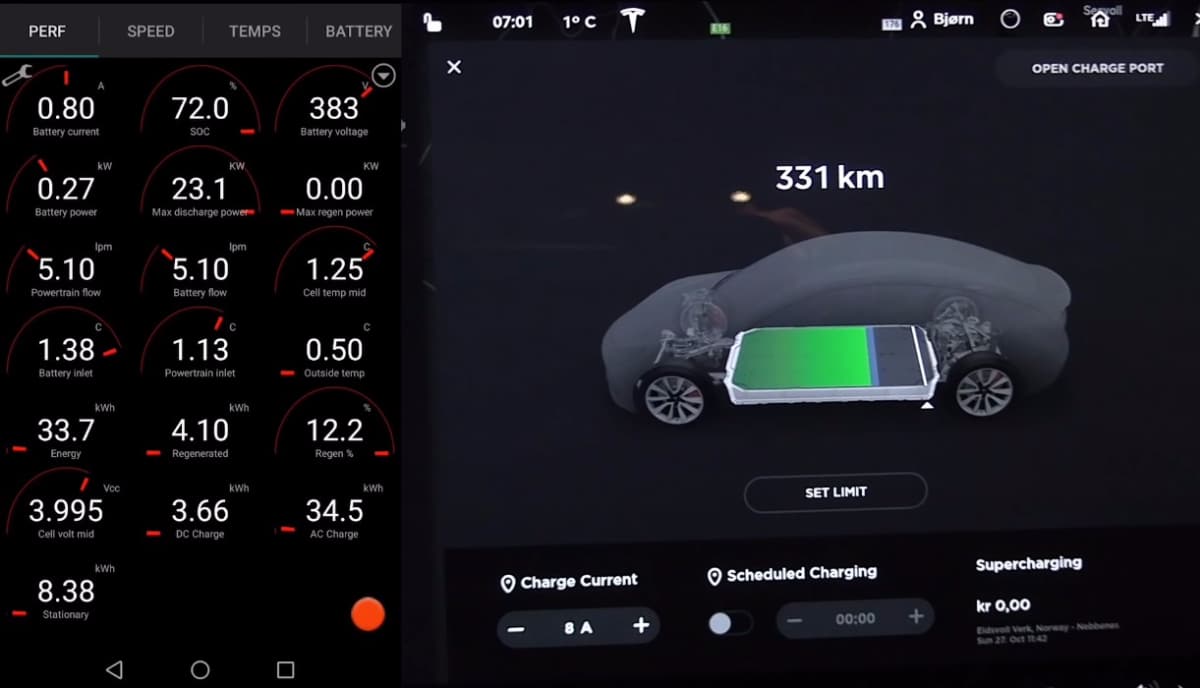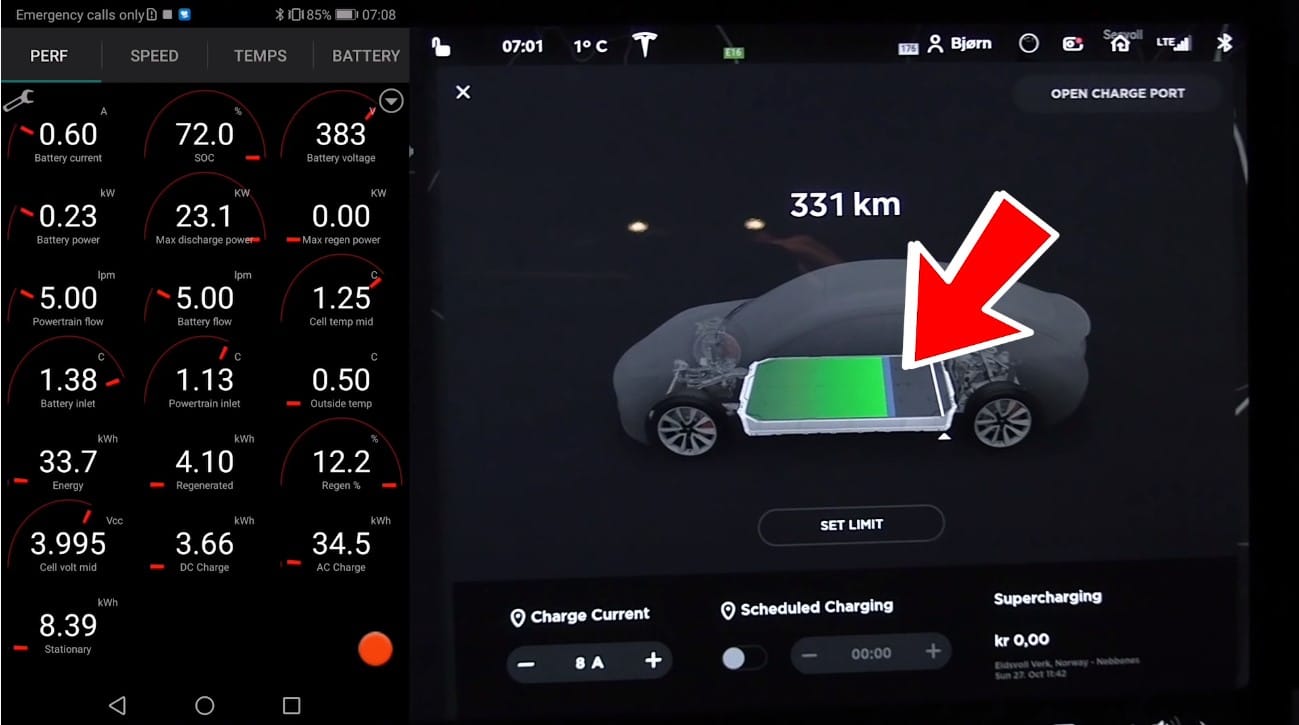Tesla Model 3 Battery Drain After 22 Days Is Lower Than Your Smartphone

The Tesla Model 3 ‘Vampire’ battery drain is no longer a problem because after a span of 22 days the car’s battery drained only around 10% in the latest testing.
The ‘Vampire’ battery drain testing was done by Bjorn Nyland, a Tesla Model 3 owner who also runs an EV-centric YouTube channel by the same name. He owns a Dual Motor Model 3 (white-colored) and has successfully clocked around 42,000 km (26,000 miles) on it.
Bjorn left his Tesla electric car at an airport in his home country of Norway on 4th November 2019 and went on a 3 weeks trip to Thailand. After 22 days, he came back to find his car still sitting at a mere 10% decrease in battery drain.
Over the course of 22 days, the car faced several intense snowfalls while being parked at the airport. Here’s what happened.
Tesla Model 3 ‘Vampire’ Battery Drain After 22 Days No Longer A Threat
On 4th November 2019, when Bjorn was about to leave his car at the airport in Norway, his car was at 82.6% charge and had a range of about 400 km (248 miles). He mentioned that he left his home with a higher charge and arrived at the airport by losing a mere 15% of the total charge.
At this point, the battery cell temperature was 29.3-degrees Celsius, which is quite normal. Bjorn, then, went ahead and disabled the sentry mode to save some more energy. He mentions in the video that the Model 3 has no energy-saving mode, so the car will most likely slip into an eco mode when inactive for a long period of time.
When he returned after a span of 22 days from his Thailand trip, he found his Tesla Model 3 at 72% charge along with some interesting revelations. His Model 3 was around 331 km and the car’s battery temperature was 1.25 degrees Celsius.
Also, before leaving, Bjorn predicted that some of the battery range will become unavailable as the cells cool down. The same happened when he checked the battery stats after coming back.
The car’s battery was showing a range of 331 km (green color) but some of the battery range was also locked away due to a very cold battery cell temperature (white color).

Another revelation was that the battery loss was only around 7 kWh over a span of 22 days, which is equal to 337 Wh/day. However, this result is based on an available range of 331 km. If the outside temperature was around 25-degree Celsius, the range available would be around 350 km, thus indicating a charge-drop of approximately 6 kWh.
As soon as Bjorn turned on the car, the battery inlet temperature started rising immediately and began to heat up the cold battery. This is being done to unlock the remnant battery range as fast as possible.
Bjorn then went ahead to a Tesla charging station and found out that due to low battery cell temperature the charging rate of his Model 3 was limited to 40 kW only. The overall charging rate was above 50 degrees Celcius but around 7 kW was being consumed by the electric motor to heat up the battery.
“This is a trick that only Tesla does, which is to run the front and the rear motors at a very inefficient mode to generate heat without creating movement. This is brilliant because it (Model 3) doesn’t need a dedicated battery heater.”
Reason For Improvement
The Tesla Model 3 uses newer 2170 battery cells made up of nickel-manganese-cobalt. They have 50% more internal volume and therefore can store more energy per battery pack.
This new upgrade combined with regular firmware updates has optimized the Tesla Model 3 to be the most efficient fuel-efficient electric car. In the latest firmware update, the Model 3 received a 5% power boost along with higher regen braking at low speed.
Meaning the Model 3 will run and stop faster while saving energy and your brake pads. Do you own a Tesl Model 3? Let us know in the comments about your experience with the car.
Also Read: Tesla Model 3 Screen Mod: Will Autopilot Work Without Screen?






